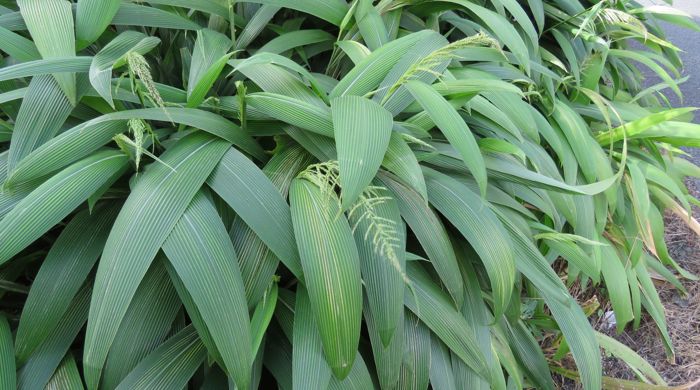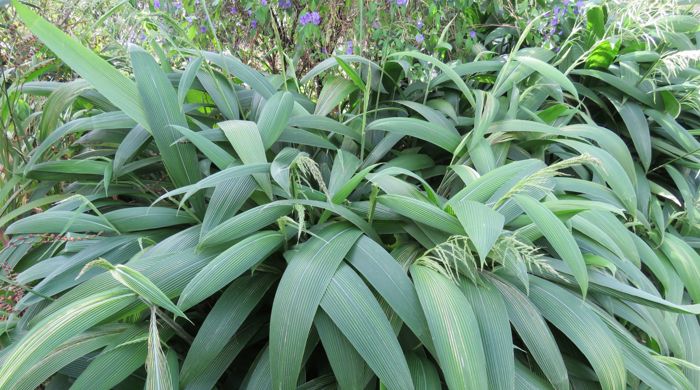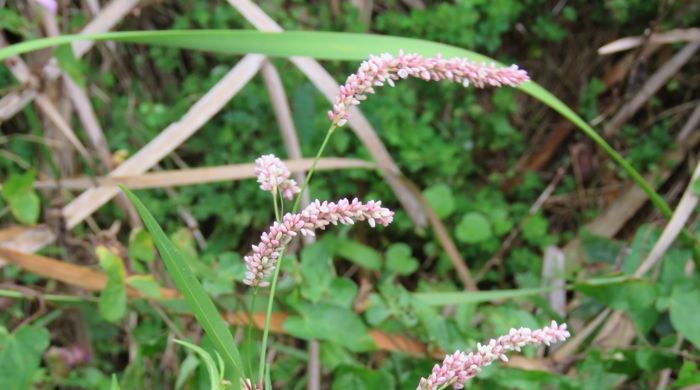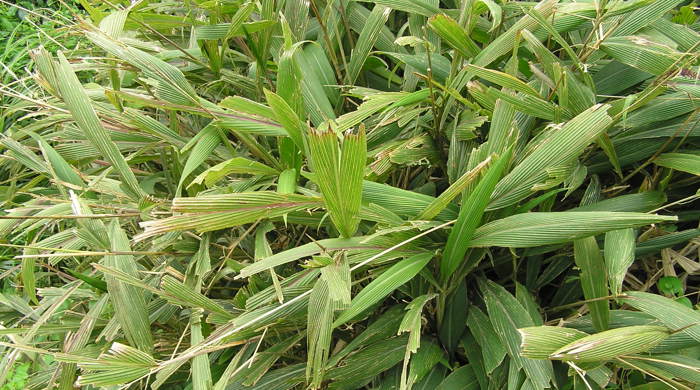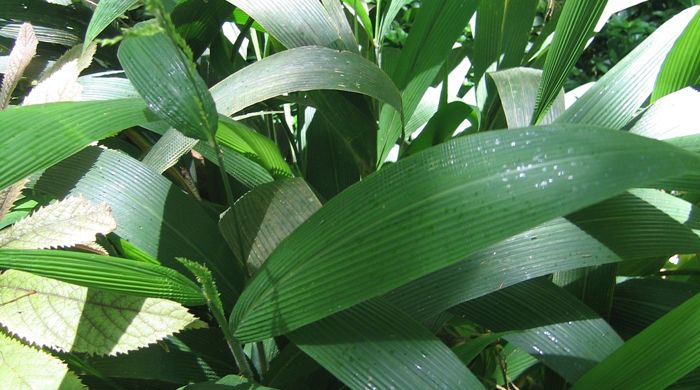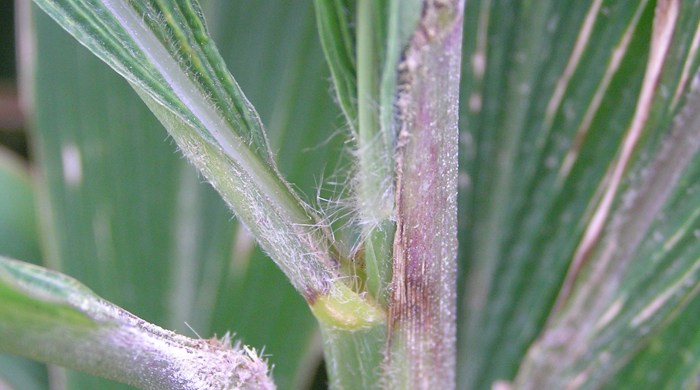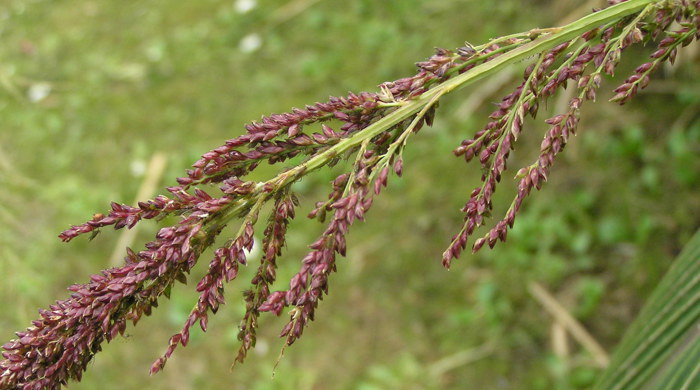Setaria palmifolia
Palm grass
Family: Poaceae
Origin: India
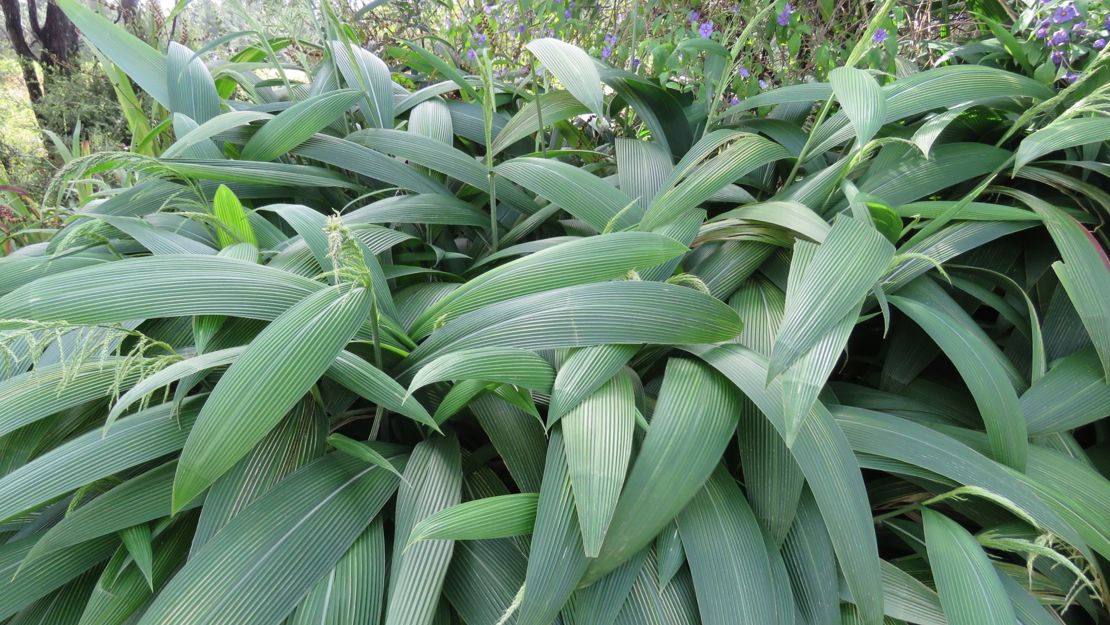
Regional Pest Management Plan (RPMP) status
- Hauraki Gulf Controlled Area Notice pest
- Whole region — Sustained control
General description
Large, dense, perennial grass. Root mass is dense and rhizomatous. Stems are rounded. Leaves are large, elongate, < 80 x 12 cm, palm-like and pleated. Flowers are held in oval, elongated spikelets and borne in large branched clusters on hairy flowering stems in summer.
What you need to know
To help protect our environment:
- you must not breed, distribute, release or sell palm grass within the Auckland region
- you must not plant palm grass within the Auckland region, unless you are transferring an existing plant on your land to another location within the boundaries of the same property
- you must destroy any palm grass on land that you occupy if it has been planted in breach of the above rules and you are directed to do so by an authorised person.
Habitats
Damp areas, urban forest, forest and riparian margins, roadsides, disturbed areas.
Dispersal
Seeds dispersed by birds, water and soil movement. Vegetative spread from rhizomes, dispersed by feral pigs. Human-mediated dispersal through dumping of garden waste.
Impact on environment
Forms dense stands, displacing native plant species and preventing recruitment. Rapid decomposition of leaf litter may increase nutrient cycling rates and facilitate invasion by other weeds.
Control
Site Management
Follow up treated areas 3 times per year. Encourage natural regeneration of native plants or replant treated areas where possible after 2-3 treatments to establish dense ground cover and minimise reinvasion.
Recommended approaches
Physical control
Method: Dig out.
Plant parts requiring disposal: Seeds and rhizomes.
Disposal options: Remove to greenwaste or landfill if practical.
Biocontrol
Biocontrol is currently not available for this species.
Community agrichemical control recommendations
Basic Growsafe certified: Foliar spray with 200ml glyphosate green per 10L of water.
Certified Handler/Experienced agrichemical user: Foliar spray with 200ml glyphosate green per 10L of water and 20ml penetrant.
Safety notes
Has irritating hairs on the plant, wear protective clothing when handling.
Caution: When using any herbicide or pesticide please read the label thoroughly to ensure that all instructions and safety requirements are followed.
